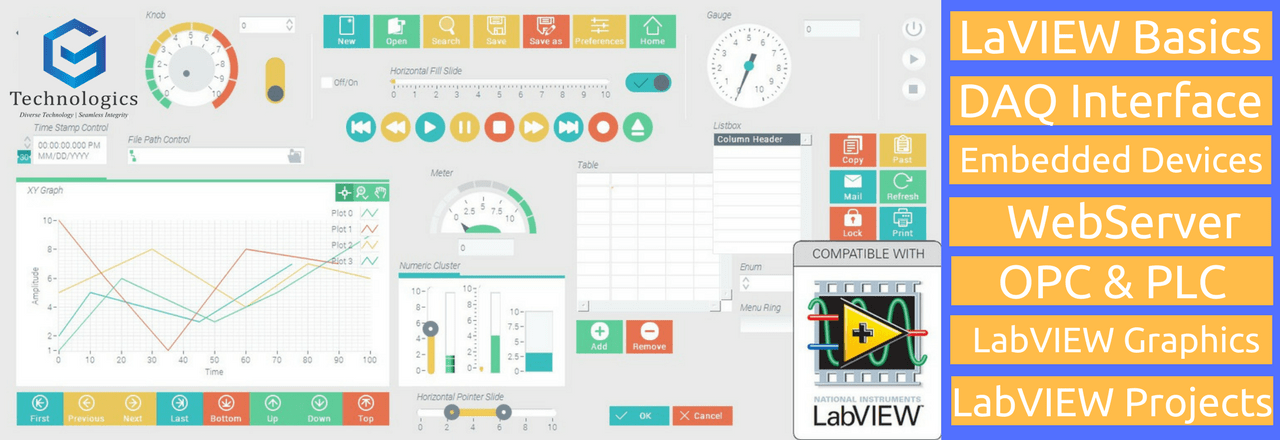NI LabVIEW Student Edition is equivalent to the full version of LabVIEW system design software with a student watermark on the front panel and block diagram. Through the graphical programming environment, you can quickly acquire data using hardware APIs, analyze the results with built-in signal processing libraries, log data to disk,.
To launch this course, you must have an active service contract or relevant access code associated with your ni.com user profile.
- Already have a service contract or course access code?
- Purchase an access code for this online course here.
Share

OVERVIEW
| Audience |
|
| Task-based Objectives | After completing this course, you will be able to:
|
| Learning Modules |
View the detailed course outline. |
RELATED NI LEARNING BADGES
| LabVIEW Application Development |
RELATED PROFESSIONAL CERTIFICATIONS
| Currently there are no related professional certifications |
RELATED LEARNING COURSES

PREPAREGain recommended skills with these courses | NEXT STEPSContinue learning with these courses | CONSIDERExplore related topics with these courses |
| LabVEW Core 2 | LabVIEW Advanced Architectures | Object Oriented Programming in LabVIEW |
Prefer a Live Instructor?
LabVIEW
LabVIEW
LabVIEW simplifies the design of distributed test, measurement, and control systems decreasing your time to market. Combine LabVIEW with proven, off-the-shelf customizable hardware from NI which has been used by engineers for over 30 years to develop and deploy custom large-scale industrial and...
Prerequisites
- Experience developing basic applications in the LabVIEW graphical programming environment
- LabVIEW Core 1 or equivalent experience
System Requirements
Labview Communications System Design Software Tutorial
NI Online Training courses are best utilized on systems meeting minimum requirements for best performance. Use the following guidelines:
Labview Tutorial Videos
BrowserLabview Software Tutorial Code
- Google Chrome (last two major versions)
- Mozilla Firefox (latest two major versions) – Extended Support Release (ESR) versions not supported
- Safari (current version) – Macintosh Only
- Microsoft Edge (current patch level) – Windows Only
Labview Programming Tutorial
- Windows 7/8/10 or later
- MAC OS X 10.10 or later
NI Hardware and Software Used or Referenced
SoftwareLabview Software Tutorial Download
- LabVIEW Professional Dev System 2014 or later
Labview Software Training
- No Hardware Used